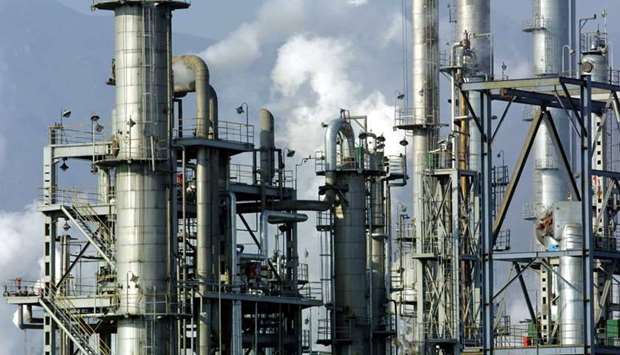China is moving forward with plans to buy up oil for its emergency reserves after an epic price crash, according to people with knowledge of the matter.
The world’s biggest importer is taking advantage of a 60% plunge this year to snatch up cheaper barrels for its stockpiles, a source of considerable speculation in the oil market because of the government’s reluctance to release information about their formation, size or use.
Beijing has asked government agencies to quickly co-ordinate filling tanks, the people said, asking not to be identified because the matter is confidential.
In addition to state-owned reserves, it may use commercial space for storage as well, while also encouraging companies to fill their own tanks, they said.
The initial target is to hold government stockpiles equivalent to 90 days of net imports, which could eventually be expanded to as much as 180 days when including commercial reserves.
Ninety days of net crude imports is about 900mn barrels, according to data compiled by Bloomberg.
While the current size of China’s state reserves is unknown, and Beijing could use a different method for calculating net imports, oil traders and analysts estimated it could amount to China buying an additional 80mn to 100mn barrels over the course of the year. While the purchases could help soak up some excess supply, traders said it will fall well short of offsetting the overall glut created by the virus lockdowns and the price war between Saudi Arabia and Russia.
Brent crude, the international benchmark, rose as much as 13% to $27.88 a barrel yesterday.
Oil also got a boost from comments by President Donald Trump that he expected Saudi Arabia and Russia to work out their differences.
The volume targeted is about the same as the Trump administration proposed buying last month for US reserves to help that country’s drillers.
The plan was thwarted after Democrats blocked a request for funds. China is also planning to announce the fourth batch of strategic reserve sites, the people said.
The expansion project has the dual advantage of creating larger emergency reserves and as an economic stimulus project to spur construction opportunities as the country recovers from the coronavirus.
Officials at the National Development and Reform Commission, the top economic planner, didn’t immediately respond to requests for comment.
Before the government’s directive was made public, consultancies SIA Energy and Wood Mackenzie Ltd both estimated that China could probably add 80mn to 100mn barrels to reserves this year before it ran into logistical and operational constraints.
According to SIA, China had about 996mn barrels of oil combined in strategic and commercial storage as of March 31.
Another research firm, Orbital Insight, pegged the figure at about 928mn barrels on April 1.
In September, the head of development and planning at the National Energy Administration said the country had total oil reserves, including strategic stockpiles, for about 80 days.
In December, state-owned China National Petroleum Corp said on its website that the government intends to boost the capacity of its strategic petroleum reserves to 503mn barrels by the end of this year, an indicator of the maximum amount the government can store.
The US currently holds about 635mn barrels in its Strategic Petroleum Reserve, according to government data.

Steam rises from the Sinopec oil refinery on the outskirts of Beijing. China is taking advantage of a 60% plunge in oil price this year to snatch up cheaper barrels for its stockpiles, sources said yesterday.


